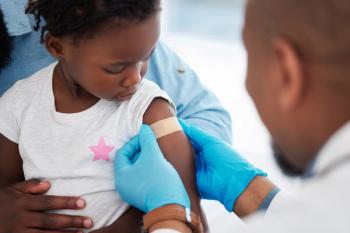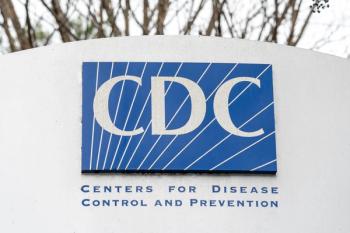
FDA news in pediatrics: September 2025
A look back at the FDA submissions and regulatory decisions in the pediatric health care space from September 2025.
Another month has come and gone, and with it, several FDA approvals and regulatory updates related to the ever-evolving landscape of pediatric health care.
In our September monthly recap, we list our top FDA-related news items in a quick, easy-to-read format so you can stay informed.
Take a look at our detailed coverage of FDA-related news from September and easily stay in touch with
Click the title of each story below for our full coverage of that regulatory update.
FDA updates in pediatric care: September 2025
1. Arcutis submits sNDA for roflumilast cream 0.3% for treatment of psoriasis in children 2-5 years
On September 3, 2025, Arcutis Biotherapeutics announced the submission of a supplemental new drug application to the FDA seeking to expand the indication of roflumilast (Zoryve) cream 0.3% for the treatment of plaque psoriasis in children as young as 2 years. If approved, Zoryve would become the first topical phosphodiesterase-4 inhibitor available for this population, addressing what experts describe as a significant unmet need for safe, effective, nonsteroidal options in young children with disease often affecting sensitive areas such as the face and intertriginous sites.
2. FDA approves first recombinant VWF for pediatric von Willebrand disease
On September 5, 2025, the FDA expanded the indication of recombinant von Willebrand factor (Vonvendi) to include children with von Willebrand disease for the treatment of acute bleeding episodes and use during surgery. This marks the first non-plasma-derived therapy available to pediatric patients in the United States, supported by data from multiple clinical studies and real-world evidence. Experts noted the approval addresses a key unmet need, offering a safer and more consistent alternative to plasma-based products while broadening access to innovative therapies for young patients with rare bleeding disorders.
3. FDA expands B-VEC label to include patients from birth with dystrophic epidermolysis bullosa
On September 15, 2025, the FDA expanded the indication for beremagene geperpavec-svdt (B-VEC; Vyjuvek) to include patients with dystrophic epidermolysis bullosa from birth, broadening its original approval for those 6 months and older. The update also allows wound dressings to be removed during the next scheduled change instead of requiring a 24-hour wait, giving families more flexibility in care. Backed by real-world data and findings from an open-label extension study, the decision reinforces B-VEC’s role as a safe and effective at-home therapy and supports its positioning as the standard of care for DEB across all ages.
4. FDA approves elamipretide HCI as first treatment for Barth syndrome
On September 19, 2025, the FDA granted accelerated approval to elamipretide HCl (Forzinity) for the treatment of Barth syndrome in adults and children weighing at least 30 kg, making it the first approved therapy for the ultra-rare mitochondrial disorder. Affecting an estimated 150 individuals in the United States, Barth syndrome causes severe cardiac and skeletal muscle complications and can be life-limiting. Approval was based on data from the TAZPOWER trial showing improvements in knee muscle strength, with mostly mild injection site reactions reported. The FDA is requiring a confirmatory trial, while Stealth BioTherapeutics continues efforts to expand access to younger children under 30 kg.
5. Satellos submits SAT-3247 IND for phase 2 study in children with DMD
On September 22, 2025, Satellos Bioscience submitted an Investigational New Drug application to the FDA to begin a phase 2 clinical trial of SAT-3247 in ambulatory children with Duchenne muscular dystrophy. The oral small-molecule therapy is designed to restore impaired muscle regeneration, offering a dystrophin-independent approach potentially applicable across all exon mutation types. The planned 3-month randomized, placebo-controlled trial, with a 9-month open-label extension, will assess safety, tolerability, pharmacokinetics, and functional outcomes. The submission follows encouraging phase 1b adult data showing SAT-3247 was safe and well-tolerated, with exploratory findings suggesting improvements in grip strength consistent with preclinical models.
6. FDA announces label changes for acetaminophen in pregnancy, approves leucovorin calcium for CFD
On September 22, 2025, the FDA announced two actions with direct relevance to pediatric practice: initiation of a label change process for acetaminophen products in light of evidence linking prenatal exposure to increased risk of autism spectrum disorder and ADHD, and approval of leucovorin calcium (Wellcovorin) for the treatment of cerebral folate deficiency. The acetaminophen update underscores the need for pediatricians to provide anticipatory guidance and developmental surveillance for children with known prenatal exposure, while reinforcing that causality has not been established. The leucovorin calcium approval introduces a new therapeutic option for confirmed cases of cerebral folate deficiency, though its use remains limited pending further evidence in broader patient populations.
7. FDA issues CRL for apitegromab for SMA, citing facility inspection
On September 23, 2025, the FDA issued a Complete Response Letter to Scholar Rock for its biologics license application of apitegromab in spinal muscular atrophy, citing manufacturing observations at a third-party Catalent facility rather than concerns over safety or efficacy. Supported by positive phase 3 SAPPHIRE trial results showing motor function gains in children already on SMN-targeted therapies, apitegromab is the first muscle-directed therapy to reach this stage in SMA. Scholar Rock plans to quickly resubmit once manufacturing issues are resolved, while patient advocates emphasized the urgent need for therapies that address muscle strength and independence in the SMA community.
8. FDA authorizes Essilor Stellest eyeglass lenses to slow myopia progression in children
On September 25, 2025, the FDA authorized marketing of Essilor Stellest eyeglass lenses for children aged 6 to 12 years to both correct myopia and slow its progression, offering a new non-contact lens option for pediatric patients. The decision was supported by trial data showing a 71% reduction in myopia progression and a 53% reduction in eye elongation compared with standard lenses, with no serious safety concerns. Reviewed under the De Novo pathway, the Stellest lenses provide a lower-risk, easier-to-use alternative to contact lenses and expand the tools available to pediatric eye care providers for managing the growing burden of childhood myopia.
9. FDA approves evinacumab-dgnb in children as young as 1 year with HoFH
On September 26, 2025, the FDA expanded approval of Regeneron’s evinacumab-dgnb (Evkeeza) to include children aged 1 to under 5 years with homozygous familial hypercholesterolemia, making it the first therapy approved for this ultra-rare condition in such young patients. The decision was supported by data from six children, with no new safety concerns identified. Already approved for older children and adults, Evkeeza provides a critical LDL-C–lowering option for families facing the life-threatening cardiovascular risks of HoFH from birth, underscoring the importance of early screening and intervention in pediatric patients.
10. FDA approves guselkumab for children with plaque psoriasis and psoriatic arthritis
On September 29, 2025, the FDA approved guselkumab (TREMFYA) for children aged 6 years and older weighing at least 40 kg with moderate to severe plaque psoriasis or active psoriatic arthritis, making it the first IL-23 inhibitor authorized for these pediatric conditions. Backed by the phase 3 PROTOSTAR trial and pharmacokinetic analyses, the approval provides a new treatment option for an estimated 20,000 children with plaque psoriasis and 14,000 with PsA in the United States. Trial data showed significant improvements in skin clearance and symptom control, with a favorable safety profile, addressing an important unmet need for effective, nonsteroidal therapies in young patients.
Newsletter
Access practical, evidence-based guidance to support better care for our youngest patients. Join our email list for the latest clinical updates.









